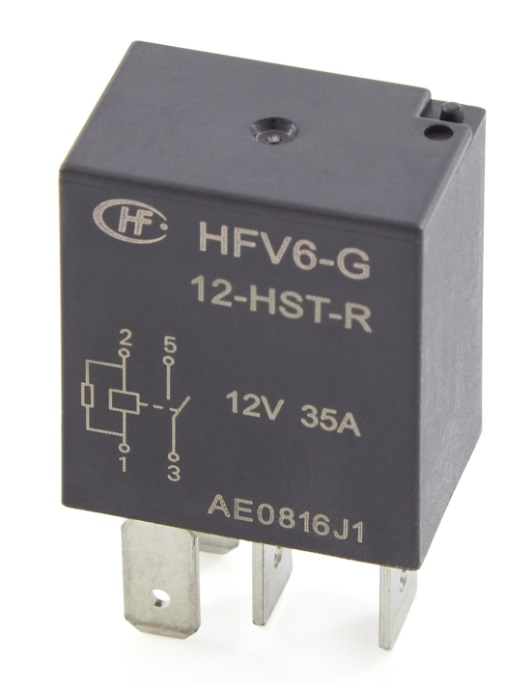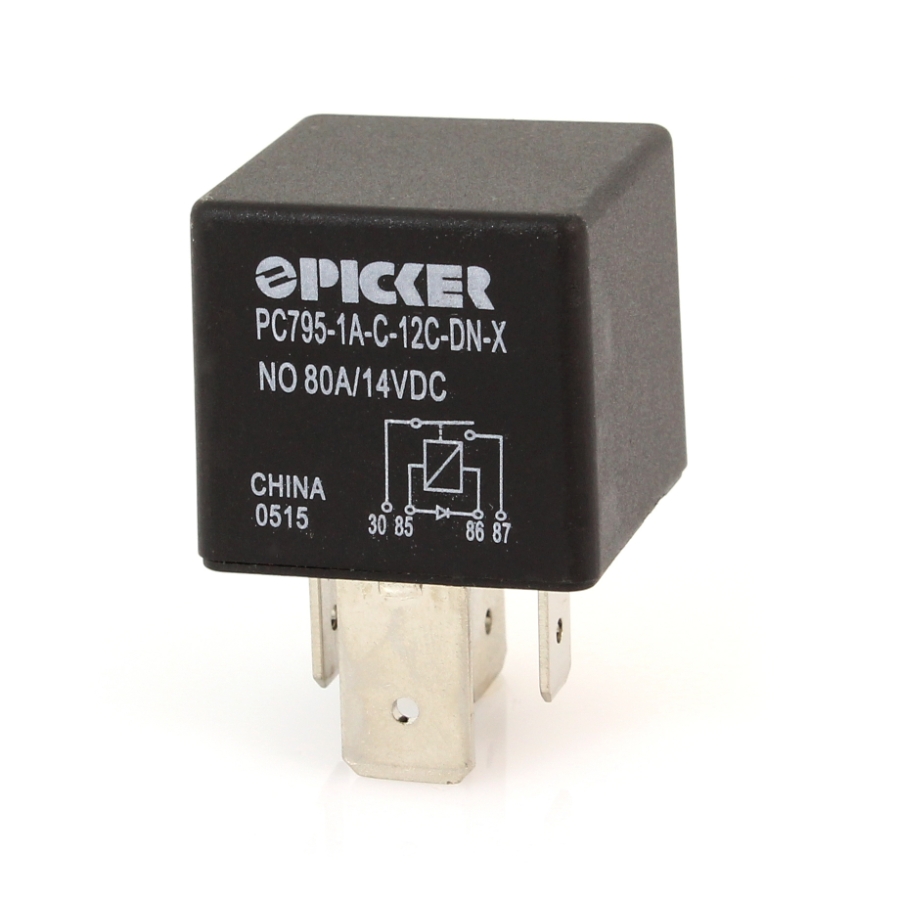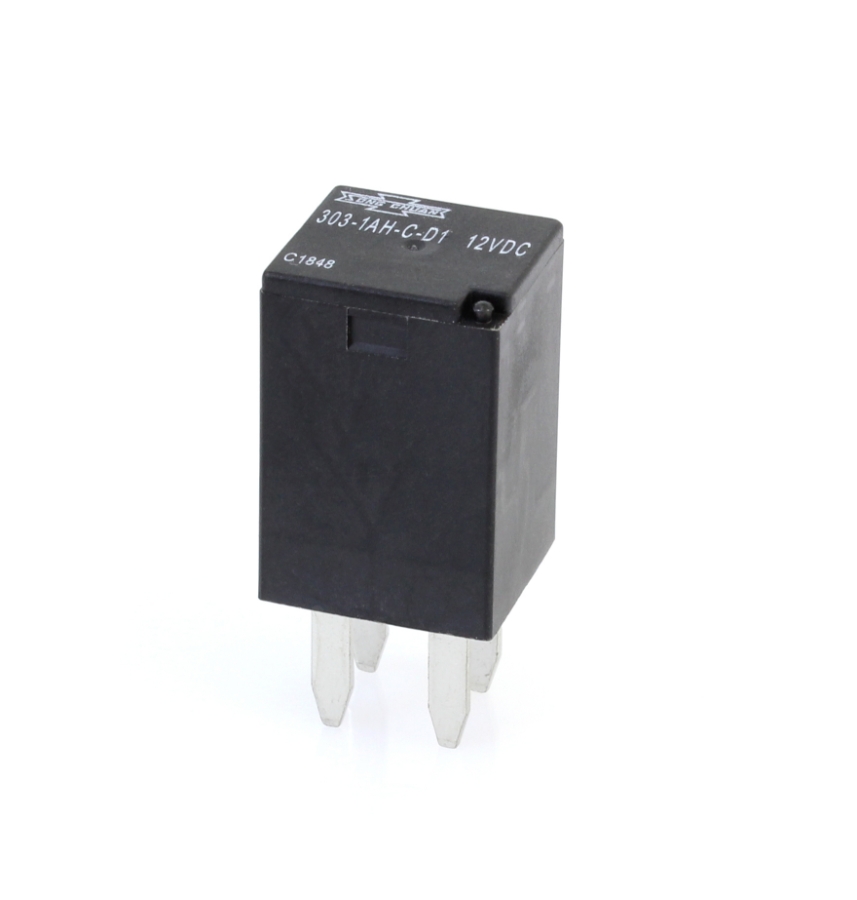Automotive Relays 101
Relays are small but essential components in virtually every modern vehicle. They allow a low-current signal to control a high-current circuit, making them invaluable for managing everything from headlights and fuel pumps to fan motors and aftermarket lighting systems. For upfitters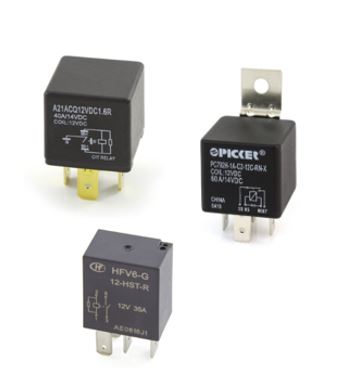 and OEMs, understanding how relays work—and the differences among the various types—is key to building reliable, serviceable, and safe electrical systems.
and OEMs, understanding how relays work—and the differences among the various types—is key to building reliable, serviceable, and safe electrical systems.
What a Relay Does
At their most basic, relays are electrically operated switches. Inside the relay housing, a coil generates a magnetic field when energized. This magnetic field moves an internal switch to open or close a secondary circuit, typically carrying a much higher current than the coil circuit. This design allows a small switch, sensor, or controller to activate a heavy-duty load without running high-current wires to the dashboard or control module.
Relay Control Ratings and Specifications: What to Know Before You Wire
When choosing a relay, keep these factors in mind:
- Voltage Rating: Match the coil voltage to your control system (e.g., use a 12V relay with a 12V vehicle battery). Mismatched voltage leads to unreliable function or damage.
- Current Rating: The relay’s contact rating must exceed your device’s current draw. If your load pulls 10 amps, use a relay rated for at least 15–20 amps to provide headroom.
- Coil Protection (Resistor or Diode. When the relay coil is switched off, the collapsing magnetic field can create a voltage spike that may damage control electronics or cause EMI. Internal coil suppression helps manage this. A diode offers more effective protection for sensitive electronics but requires correct coil polarity. A resistor is polarity-agnostic and allows faster relay disengagement but provides slightly less suppression. Choose based on system needs and compatibility.
- Circuitry Requirement: Select a relay configuration that matches your circuit's switching needs:
- SPST (Single Pole Single Throw): A simple on/off switch for a single circuit — typically used to power one load.
- SPDT (Single Pole Double Throw): Allows switching between two circuits — commonly used for selecting between two outputs
- Footprint: Automotive relays come in various form factors, such as ISO mini, micro, and maxi relays, with different terminal arrangements and sizes. Choose a relay that physically fits your available panel space.
- Mounting style: Whether plug-in (to a connector or holder), mounting tab, board mount, or bolt-down, choose based on vibration exposure, accessibility, and serviceability.
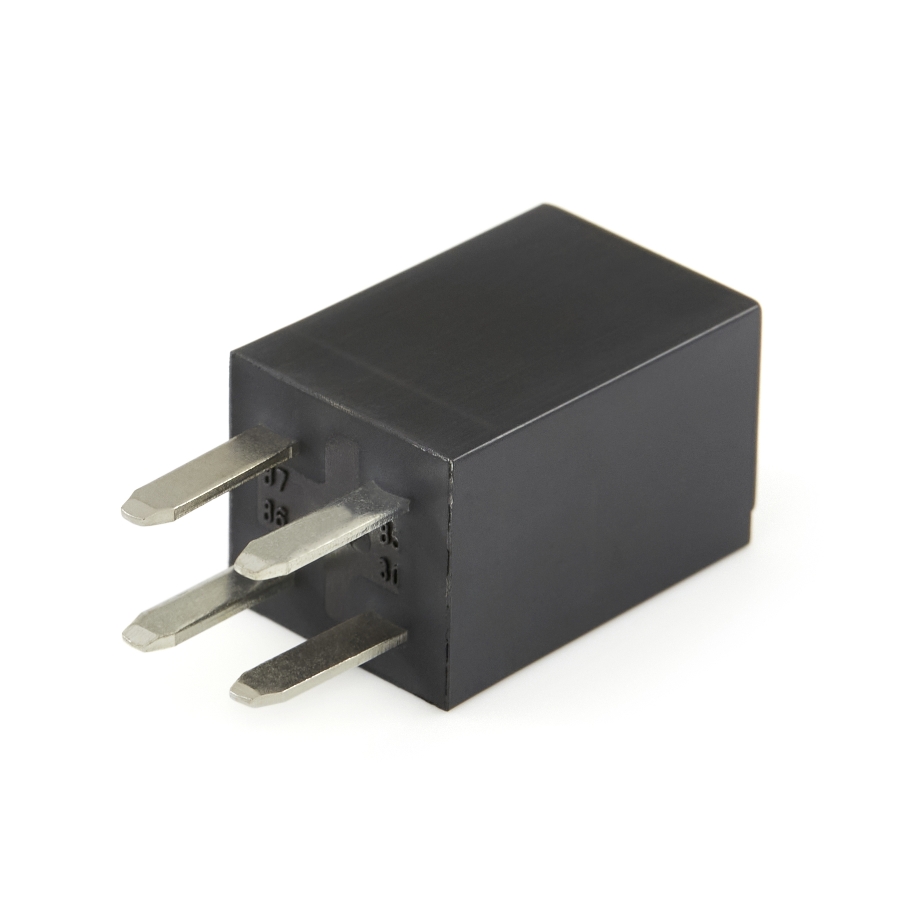
Common Relay Pin Configurations
Most standard electromechanical relays have 4 or 5 pins using a common pin numbering system, often based on DIN 72552 standards.
A 4-pin relay is designed to control a single circuit and uses:
- Pins 85 and 86 to energize the coil
- Pin 30 as the power input (common)
- Pin 87 as the output (normally open)
There are two configuration options:
- Normally Open (NO): The circuit completes only when the coil is energized. This configuration is ideal for basic on/off control of a single load.
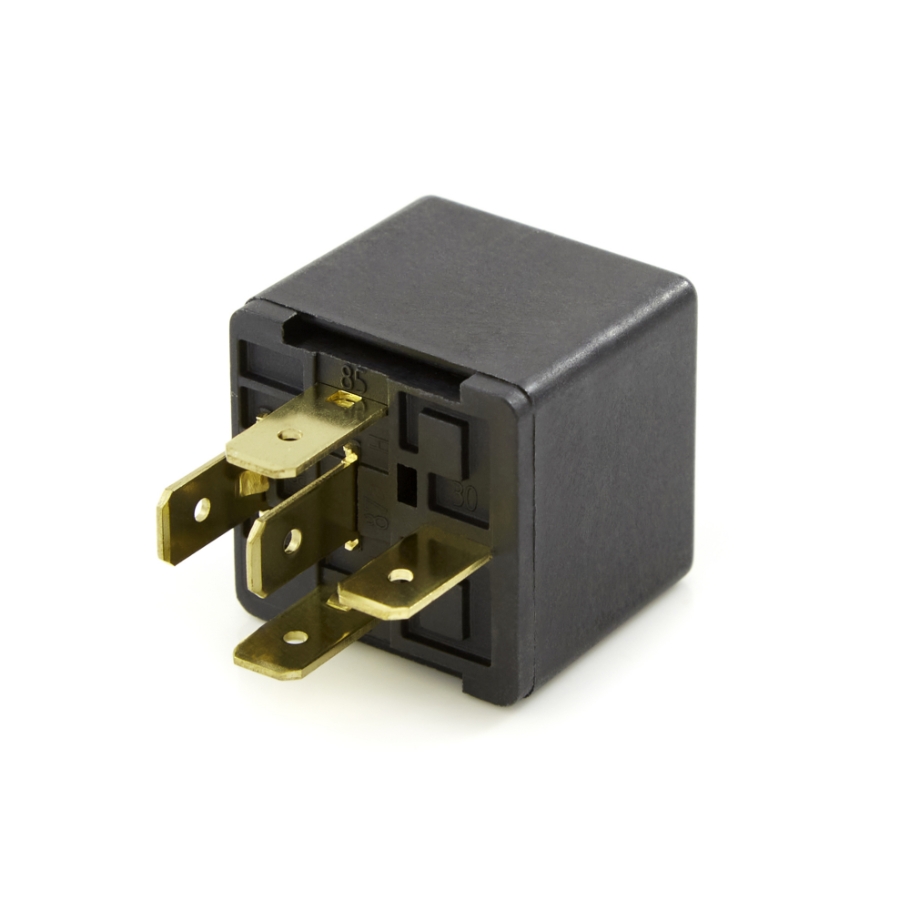
- Normally Closed (NC): Less common in 4-pin designs, this setup keeps the circuit closed by default and opens it when the relay is energized.
5-pin relays offer more versatility and can be used to control two circuits:
- Pins 85 and 86 connect to the coil
- Pin 30 is the common terminal
- Pin 87A is normally closed (active when the coil is off)
- Pin 87 is normally open (active when the coil is on)
This dual-circuit capability makes 5-pin relays ideal for switching between two states, fail-safe operations, or changeover controls.
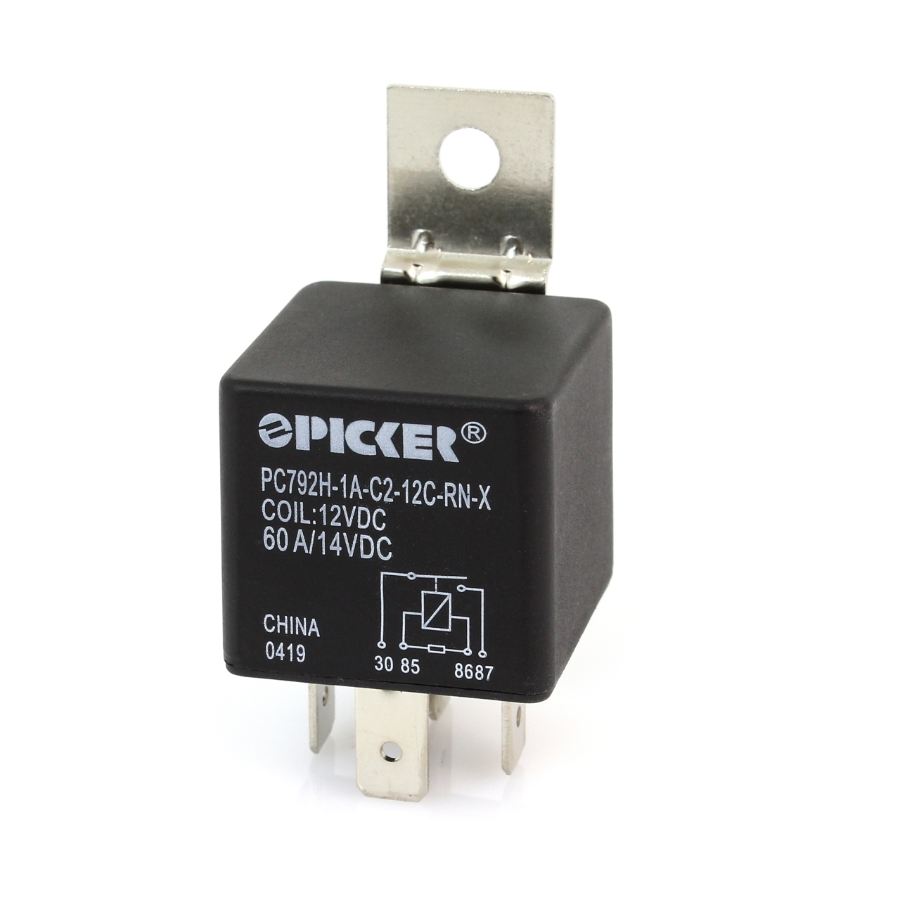
Circuit Diagram
Automotive relays often have a circuit diagram printed on the housing to serve as a quick-reference guide for installers, technicians, and engineers. Many relays look physically similar but may have different internal configurations. The printed schematic quickly shows the relay's logic and whether it includes coil suppression. For example, the Picker Components relay shown at right features the wiring diagram in the lower right corner.
One of the most-used relay formats is the ISO mini relay. These relays are recognizable by their 1-inch body, ¼” or 6.3 mm terminals, and typical 30- to 40-amp ratings. They’re widely used across automotive and truck platforms due to their durability and standardization.
Right: A 40-amp ISO mini relay from CIT Relay and Switch.
Micro relays are much smaller and are often found in OEM fuse and relay centers. Despite their size, they can still carry 20–35 amps in many applications. Micro relays feature 3/16” terminals and have a body size that is typically 50% or smaller than mini relays. They usually have a lower current-carrying capacity due to their smaller terminal size and footprint.
Right: A 35-amp micro relay from Hongfa.
Designed for high-current applications, these heavy-duty relays can handle loads up to 80 amps or more, making them ideal for starter motors, large fans, or battery disconnect systems. Maxi relays have standard-sized ¼ inch signal terminals, but larger 3/8” power terminals, thus supporting a higher current carrying capacity.
Right: An 80-amp maxi relay manufactured by Picker Components.
ISO 280 Mini Relays
In modern applications, ISO 280 mini relays are increasingly popular. These are standard 1” cube-style relays but with an ISO 280 footprint—the 280 refers to the 2.8 mm width of the terminal blades. These relays are designed to fit ISO 280-format fuse and relay blocks and are commonly found in modular power distribution centers. They are a favorite among OEMs due to their compact footprint and ease of integration.
ISO 280 micro relays are about half the size of mini relays, making them ideal for applications where space is at a premium, such as in modern automotive, commercial vehicle, and equipment electrical systems. Despite their reduced size, they offer reliable switching for circuits typically rated up to 20–25 amps and are available in a variety of configurations, including SPST and SPDT, as well as sealed and unsealed versions to suit different environmental conditions.
Right: A 5-pin 35-amp micro relay from Picker Components.
ISO 280 ultra micro relays are the smallest form factor in the ISO 280 relay family—about 30 percent smaller than the micro relays. They are designed for high-density power distribution applications where every millimeter counts. Despite their ultra-compact size, these relays maintain strong switching performance—typically rated up to 20 amps—and use the same 2.8 mm terminal footprint for compatibility with standard ISO 280-style relay and fuse blocks. Ideal for space-constrained environments, Ultra micro relays are often used for low-current switching tasks such as control circuits, signal routing, and electronic system triggers.
Right: A 20-amp ultra micro relay from Song Chuan.
Relay Selection Tips
Selecting the right relay depends on a few key factors: the current draw of the load, the space available in your panel or enclosure, the required switching logic (SPST vs. SPDT), and the environment the relay will operate in. For harsh environments, weatherproof or sealed relays are available with IP67 or IP69K ratings to keep out moisture and dust. Choosing the right relay comes down to your application's needs:
- Current Requirements: Know the current draw of your load
- Pin Configuration: Use 4-pin for simple on/off, 5-pin for dual-state switching
- Environmental Protection: Use sealed relays in dusty, wet, or harsh environments. If the relay is in a controlled environment, it may only to be sealed against mild dust intrusion. But if it is in an application that will be exposed to pressure washing, it would need the highest IP rating. Learn more in Waytek’s Guide to IP Codes for Vehicle Components.
- Footprint & Housing Size: Choose mini, micro, or ultra micro styles based on available space
In Summary
Relays may be small, but their impact on the safety, reliability, and flexibility of your vehicle’s electrical system is enormous. Whether you're outfitting a new fleet vehicle, upgrading off-road lighting, or building a custom harness in your shop, understanding how relays work—and choosing the right one—can make all the difference.
Browse Waytek’s full selection of relays and accessories at www.WaytekWire.com
Have questions? The Waytek team is here to help.
Subscribe Now
Subscribe and be the first to know when new articles are published.


